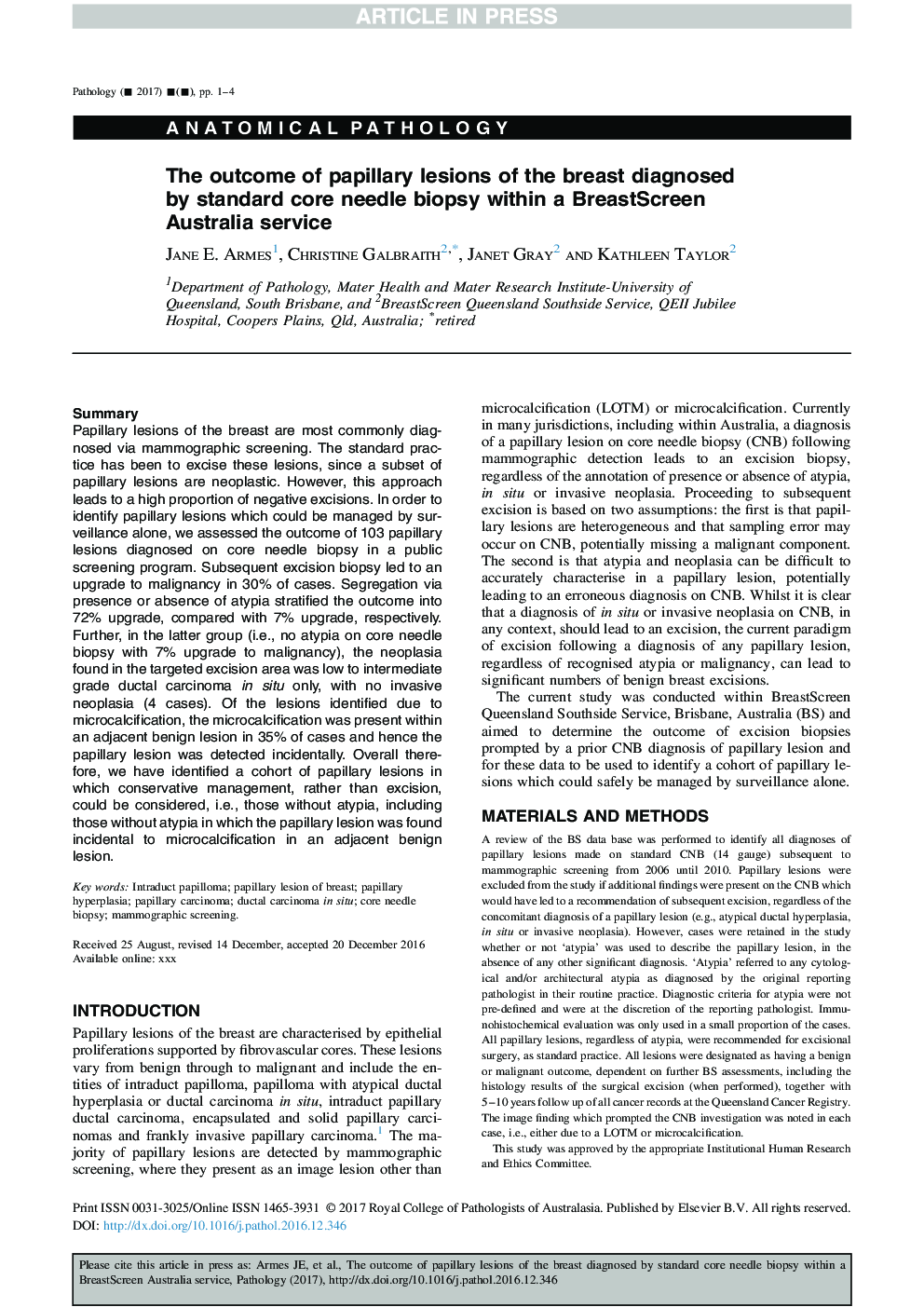| Article ID | Journal | Published Year | Pages | File Type |
|---|---|---|---|---|
| 4761072 | Pathology | 2017 | 4 Pages |
Abstract
Papillary lesions of the breast are most commonly diagnosed via mammographic screening. The standard practice has been to excise these lesions, since a subset of papillary lesions are neoplastic. However, this approach leads to a high proportion of negative excisions. In order to identify papillary lesions which could be managed by surveillance alone, we assessed the outcome of 103 papillary lesions diagnosed on core needle biopsy in a public screening program. Subsequent excision biopsy led to an upgrade to malignancy in 30% of cases. Segregation via presence or absence of atypia stratified the outcome into 72% upgrade, compared with 7% upgrade, respectively. Further, in the latter group (i.e., no atypia on core needle biopsy with 7% upgrade to malignancy), the neoplasia found in the targeted excision area was low to intermediate grade ductal carcinoma in situ only, with no invasive neoplasia (4 cases). Of the lesions identified due to microcalcification, the microcalcification was present within an adjacent benign lesion in 35% of cases and hence the papillary lesion was detected incidentally. Overall therefore, we have identified a cohort of papillary lesions in which conservative management, rather than excision, could be considered, i.e., those without atypia, including those without atypia in which the papillary lesion was found incidental to microcalcification in an adjacent benign lesion.
Keywords
Related Topics
Health Sciences
Medicine and Dentistry
Forensic Medicine
Authors
Jane E. Armes, Christine Galbraith, Janet Gray, Kathleen Taylor,
